Hans van Rappard
1 ― From: Rappard, H. van (2009). Walking Two Roads – Accord and Separation In Chinese and Western Thought. Amsterdam: VU University Press. Chapter 1, pp. 15-28
part 1 – part 2 – part 3 – part 4 – part 5 – part 6 – part 7 – part 8 – part 9 – part 10 – part 11 – part 12 – part 13 – part 14 – part 15 – part 16 – part 17
Poetic aura and worldview in China
In the 17th century John Floyer, a great admirer of Chinese medicine discerned in these texts an alternative way of thinking.
“Europeans excel in reasoning and judgment, and clarity of expression”,
he wrote, whereas
“Asiatics have a gay luxurious imagination.”
Reading on the wonderful Chinese ‘skill in pulses’ he found
“good sense, tho’ express’d in the Asiatic way, whose words are sorts of hieroglyphics, as well as their characters; and their expressions are fitter for poetry and oratory, than philosophy.”[1]
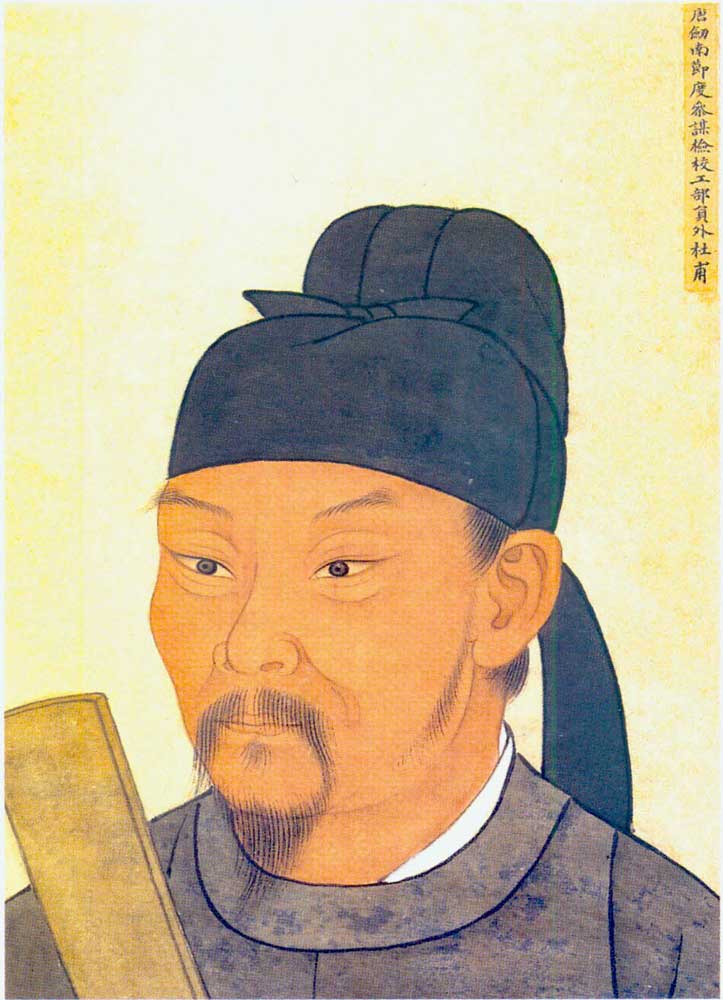
Interestingly, Floyers observations do not only pertain to Chinese poetry. They have far wider ramifications, notably for the worldview and way of thinking of the Chinese.
This paper will therefore begin with an exploration of some of the key-features of Chinese poetry, which will then be set against the poetical views of the forebears of those who ‘excel in reasoning and judgment’, the ancient Greeks.
In the middle of the 8th century, China saw a great rebellion, which prompted a functionary, Du Fu, to join the forces that were loyal to the emperor.
Having settled his family in Fuzhou, he was captured by the rebels and kept prisoner in Chang’an in the Western province of Shaanxi. There he wrote,
“This moonlit night in Fuzhou:
My wife is alone in contemplating it.
Far away I think of my small children.
They cannot know this in thinking of
Chang’an (or that she dreams of Chang’an).
In the perfumed atmosphere the halo of her chignon is damp,
Beneath the clear limpidity her arms of jade are icy.
When, at last, as we press against each other on the empty casement,
Coupled ― will the traces of our shining tears dry”?
As François Jullien informs us, an ancient tradition in Chinese poetry holds that it is preferable to avoid the direct expression of sentiment but instead to reverse the perspective.
Du Fu presents a fine example of this technique of opposite evocation by not writing about his own loneliness but about the feelings that his family must be experiencing.
Du Fu’s wife contemplates the moon in faraway Fuzhou, while his own solitude is enhanced by the indication that their children are too young to understand what their parents must be going through when thinking of Chang’an.
The next two lines express a delicate fusion of the woman and her surroundings: while her chignon perfumes the air, the vapours of the night penetrate it with their dampness. Moreover, all this ― the perfuming and the dampness as well as her icy arm suggest that she has contemplated the moon for a long time and also therefore, that thinking of her husband she cannot sleep. The last two lines longingly describe the future moment when they will meet again and the traces of their tears will dry.
Chinese commentators have admired the poet’s subtle expression of his feelings by addressing them from a distance.
“There is no brush stroke that is not a detour”,
wrote one, while according to another
“sentiment and situation, evoked indirectly, are completely rendered.”
‘Detour’ and ‘indirection’
These comments, and especially the words ‘detour’ and ‘indirection’, indicate already quite a lot about the Chinese way of thinking.
One such detour is that the solitude is rendered from the perspective of the woman in Fuzhou rather than that of the man in Chang’an, while in another detour the present solitude is expressed from the perspective of the future reunion. The role of the moon is significant too, because at the moment that the poem refers to it is only the view of the moon that unites the separated spouses; in China the moon traditionally points to the theme of separation.
I want to quote Jullien at length when he summarises the role of detour and indirection in Du Fu’s poem and in Chinese poetry at large because it conveys much of its significance for this essay. Referring to a Chinese commentator he writes,
“This poem best attains ‘through detour’ the ‘implicit richness of feeling’ (Wang Fuzhi). This sentiment, as we have seen, is always expressed as absence in relation to what is said; it is that (infinite) emptiness within the fullness of the text. To express his emotion, not only does the poet not mention it, but he uses no psychological notation ― no term here names the feeling ― and the poem does not attempt to identify the experience it evokes; it exploits no symbolic motif (to deploy the infinity of meaning on another plane). This feeling is rendered indicatively, which keeps us in the order of phenomena (such as expressing the duration of the wait through the chilling) … the entire effect of the poem rests on a single strategy of detour [which]implies a conception of reality that differs from the Western view.”[3]
This quotation offers something like a preview of our exploration of the Chinese view of the world. Not only does it summarise the central features of its manner of poetical expression but it also prepares us for one of its most characteristic points, namely that the Chinese view does not go beyond the ‘order of phenomena’, that is, no level of reality is recognised other than that of concrete objects and events.
Du Fu wrote in the 8th century. Thus, one might wonder if the conclusions that may be drawn from his poem warrant extrapolation to contemporary China or are valid only for a specific historical era, spanning at best a couple of dynasties.
From 1975 to 1977, the young sinologist François Jullien lived in China. In those days the political line of the Communist party underwent great upheavals because after the death of Mao Zedong in 1976 the radicalism of the Gang of Four was transformed into the reformism of Deng Xiaoping.
Reading the ubiquitous wall posters and other political news Jullien was struck by the fact that beneath the official formulations many ulterior motives appeared to filter through and countless hidden orientations emerged in the endless rehashing of propaganda.
The stereotyped language did not state anything directly but for those who were capable of reading between the lines it was nevertheless loaded with indirect meanings and hidden warnings.
When de-Maoisation had come under way, a wall poster re-evaluated the work of Mao. Having quoted Deng’s formula ‘seven-tenths good, three-tenths bad’, it quickly passed over Mao’s positive role before the revolution but elaborated very precisely on the serious faults that he had committed afterwards.
At that point it was clear that the use of Deng’s formula was out of proportion to what it implied and that the criticisms mentioned in the poster rather surpassed the ‘three-tenths’ to which they were supposed to be restricted.
Thus, under the guise of the official formula and even drawing authority from it, the poster went beyond the position that it seemed to convey at first sight and, what is more, even subverted it. Without openly stating that Mao’s role had been basically negative, which would have cost the author of the poster his head, he did in fact claim this, even if indirectly.
Spring and Autumn Annals
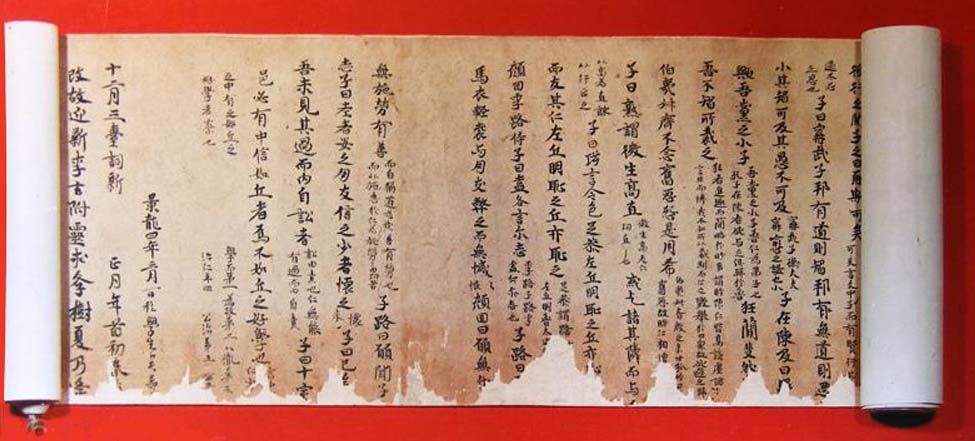
The practice of detour and indirection is rooted in the Chinese tradition. This was seen in Du Fu and Maoist China and may already be noted in the most ancient Chinese public records, the Spring and Autumn Annals.
This chronicle of the state of Lu (722-481 BCE) reports a number of diplomatic encounters during which poetry was exchanged. At the time the practice of citation was a widespread art.
One who demonstrated much talent and is most often mentioned in the Annals, is Mu Shu, an officer of the state of Lu. For many years Mu Shu worked to safeguard the alliance between the small state of Lu and powerful Jin, in order to keep the imperialistic state of Qi in check.
In 545 BCE, after Jin had attacked Qi to defend Lu, Qi made peace with Jin, and Lu felt in danger again. Mu Shu was therefore sent to renegotiate with Jin and, wishing to honour the prime minister of this state, during a banquet he sang ‘Magpie’s Nest’:
Now a magpie had a nest
But the cuckoo lived in it
At first sight, the image with which the poem begins seems to have no significance whatsoever for the situation but what is implied is that just as the cuckoo lives in the nest although it does not belong there, the prime minister of Jin is the one who is really in power in Lu.
Thus, citing only a few lines of poetry Mu Shu was able to communicate the highest eulogy, showing the minister of Jin to surpass his prince without, however, falling into risky flattery. But such skill in using poetry would fail to work if it was not met by an equal talent to decode it. Thus, when the minister of Jin was invited to a banquet in turn, in thanks for it he also sang a poem conveying a hidden message.[5]
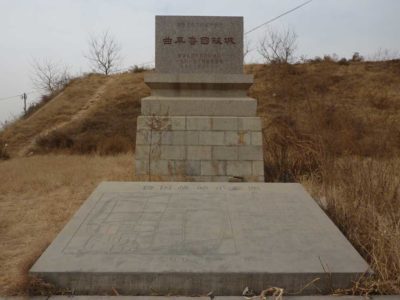
Interesting as these exchanges may be ― it is a long time since diplomatists sang to each other ― we will not stay with the officials of Lu and Jin any longer. But we have learned from them that indirection has been a means to express criticisms that cannot be stated openly since at least the sixth century BCE. Because the Chinese have for a very long time lived in a society that was heavily censored poetical language became, among other things, the indirect expression of political meaning. This use of poetic detour was widespread and was considered entirely justified.
According to the Chinese cultural tradition, poetry arises from an ongoing intimate relationship with the world rather than from an attempt to give a static representation of it. Put differently, the world is not experienced by the poet as an object but as a partner. But as indicated already, this does not only hold for poetry as a specific literary genre but has a much wider significance so that the poetic relationship enables us to grasp an essential element of what has conditioned the Chinese relation to the world in general. To clarify this, we turn to the notion of indirection.
In Chinese poetry several levels of indirection are distinguished of which xing is the most interesting and important one. Xing, which translates as evocation or arousal is traditionally felt to comprise the essence of poetry.
Its significance appears in particular from the fact that at this level of indirectness it is the world that predominates in the poetic relationship rather than the human subject. At the xing level one has entered into contact with the world in such a way as to arouse one’s inner dispositions. At this point, in other words, the world has fully taken the initiative.
Unlike what is usually the case in our interaction with it there is simply no room anymore for deliberation and intention. In the xing mode the relationship has turned into a direct and spontaneous encounter. It is important to see that, at first sight paradoxically, this highest level of indirectness produces “the most immediate writing.”
Does not indirectness imply distance and separation? No, it most emphatically does not. Rather the opposite. It is precisely the predominance of the world in the xing mode that precludes intention and deliberation and thus, distance and separation.
There is simply no room left for them and because of this the xing mode cannot but produce the most indirect and diffuse meaning conceivable ― or rather, inconceivable because in this mode meaning defies codification and so must remain diffuse.
Put differently, xing, that is, the most direct relationship with the world, when I and world are “caught in a common vacillation”, produces the most indirect meaning. This is not difficult to appreciate once it is seen that in the xing mode there is no separation of subject from object because there is no gap between I on the one hand, and world on the other hand. There is only an immediate, felt response.
“In other words, there is no subject or object here; nor is there any representation: the outside world serves as the innermost heart’s partner, and the two cooperate in a single process.”[7]
Xiang
The partnership with the world as conveyed by poetry and its significance for the Chinese worldview are also brought to the fore by the concept of xiang, which translates as figuration.
In Western music, figuration generally means an embellishment or accompaniment composed of ‘figures’, that is, small patterns of notes occupying a beat or two of time. Figuration may result from the breaking up of notes into figures which decorate the original pitches with little garlands of quick notes or connect one pitch with another.
Next to accompaniment and ornament, figuration serves many other purposes in music, such as the setting of moods but whatever its particular role in a composition, figuration does not, as would variation, depart from it. And this is the crucial point; a figuration stays close to the composition that is embellished by it ― so close that we will not be led to think that the music has suddenly changed and we are listening to a different composition.
It is this feature of ‘closeness’ that figuration in music shares with figuration in Chinese poetry. Xiang too, keeps us at the same level of reality; it does not make us depart from it. Often combined with the familiar notion of xing as ‘evocation-figuration’ (xing-xiang), it intermediates between evocating world and aroused heart. Xing-xiang means that poetry does not function as a variation on the world which takes us away from it to a different world but rather as an accompaniment to it, establishing an emotional flux in which world and heart merge into each other. Wordsworth would probably have said that evocation-figuration ‘tunes’ us to the world.
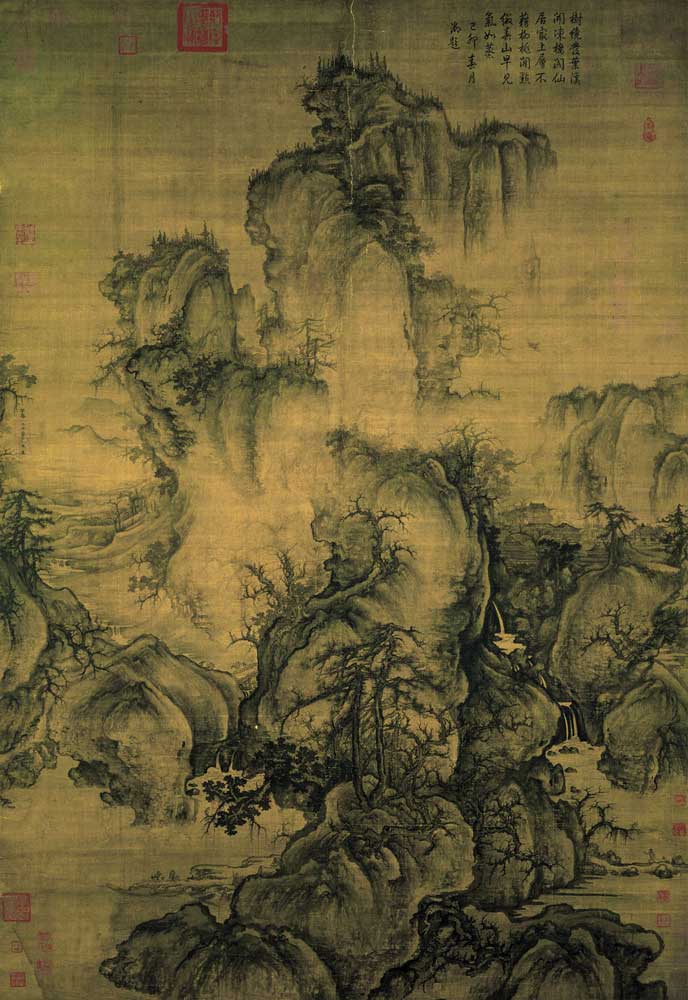
Quite tellingly, the poetic relation with the world is often described in terms of ‘breeze’ or ‘mist’. These words are used because in becoming diffuse and nebulous xing
“is transformed into a subtle influence one senses emanating from the poem’s images and imbuing subjectivity. Instead of pointing to an idea, it creates an aura.”[9]
Another author calls the characters in Chinese poetry
“‘pointers’ toward a finer shade of suggestive beauty [forming]an atmosphere or environment, an ambiance, in which the reader may move and be directly present, poised for a moment before being imbued with the atmosphere that evokes (but does not state) an aura of feeling.”[10]
And according to a ninth century author,
“the landscape evoked by the poet is analogous to what is produced when, in the blue fields in the warmth of the sun, a vapour rises from the hidden jade: one can contemplate it but not stare at it fixedly.”[11]
The only way that the Chinese can speak of such a mist or aura is allusively ― but not symbolically as will be seen below ― because this would suggest an ‘ideal’ meaning beyond the world. Moreover, this allusion can only be savoured and this is why metaphors like chewing and imbibing are also used to indicate poetic reading.
Much of what has been said about Chinese poetry, by the way, also holds for painting and calligraphy. Inextricably linked, they are called the ‘three perfections’.
The 18th century painter Shen Tsung-chien wrote that good painters can write poetry, while good poets can easily learn painting because the same brush and ink is used.[12]
More to the point is that in poetry and painting a similar “blending and interflow” of mind and world obtains. In both forms of art “sentiments go out like offering a gift, while inspiration comes as a reward. This, indeed, is the very summit of rhythmic vitality an artist can clamber to.”[13]
Rhythmic vitality constitutes the very goal of art in China. In what Lin Yu-tang called the most influential paragraph ever written on Chinese painting, the fifth century painter Hsien Ho stated as its first principle that a vital tone and atmosphere, or rhythmic vitality be created. By this he meant that the artistic creation must be vibrant with movement and life. Moreover ― and here another similarity with poetry is found ―
“this tone and atmosphere, rather than verisimilitude, is the goal of a painting.”[14]
In the final analysis, Jullien concludes,
“what permits poetic indirection to express emotional intensity is that it liberates meaning from all exclusivity. The poetic image is both image and non-image, near and far. The world that characterizes it is that of non-duality: of the totality of possibilities, not of the absolute. In other words, the unfolding of the poetic image opens it to all perspectives by going beyond their differences; and this complete availability of meaning, to which poetic incitement gives access, constitutes its allusiveness.”[15]
Poetic representation and worldview in Greece
The poetry of ancient Greece was fundamentally different from the Chinese. It is characterised by the power to ‘put before the eyes’, that is, it makes us call to mind what a text speaks of. The Greek poet does not just narrate, he shows,
“the reader-listener becomes a spectator as well, believing he is participating in the events described.”
The difference with the Chinese could hardly be larger; indeed, indirection and detour are little valued here. Rather, the Greek poet’s concern is to
“evoke the past and to bring it into the present as if we were participating in the action.”[16]
Another difference between the Chinese and Greek conceptions of poetry is that the latter is essentially rhetorical ― a feature that, incidentally, poetry has long since shed. But the rhetorical nature of poetry in ancient Greece is not difficult to understand, Jullien explains, because it was not conceived
“in terms of a process or phenomenon based in the notion of [evocation, xing] as in China, but in terms of persuasion: the actual representation, through which poetry tries to make us believe the things described, gives us a convincing impression of its truth.”[17]
In view of the insistence of the Greek poets to make us see clearly what is pictured in their texts, it will not come as a surprise that mental images and representations were eagerly embraced by them.
Interestingly, we have not yet encountered the concept of representation and there are good reasons for this because representations do not fit in at all with Chinese art.
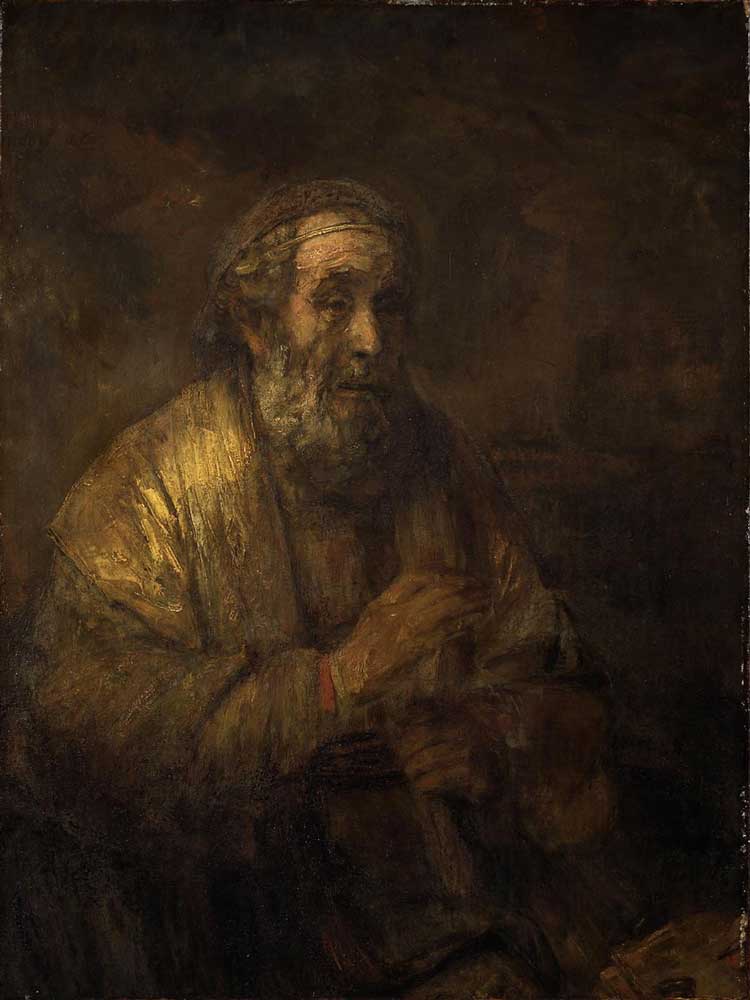
Vision being an analytical, discriminating sense, it was highly important in Greek thinking but not favoured by the Chinese, who never developed the notion of mental images representing objects and events in the external world that were modelled on the visual sense.
As should by now be abundantly clear, nothing could be farther from the Chinese poet than the wish to faithfully represent a particular event or scene ― indeed, it is precisely the specificity of the visual sense that he tried to free his spirit from.
The representations developed by the Greeks are connected with a worldview that is very much different from the Chinese one.
This is not difficult to understand once we take a closer look at the concept: indeed, what representations are supposed to do is to represent, that is, to take the place of something else. But what else, and where? Now, the process of representation takes place in the mind and the noun representation denotes a mental image that stands for something that is not in the mind but in the external world.
Representations and mental images
For instance, a poem about a historical event may function for the reader as the representation of that event because it depicts a glorious battle that took place many centuries ago. Having read the poem and thus acquired a mental image of the battle, the reader is to some extent able to (mentally) participate in it even though the epic representation of the battle is obviously not the event itself.
But although obvious, it is important to realise that there is a difference, a huge gap even, between an event or object in the world and its representation in the mind.
Long after the ancient Greeks had developed representations, in the early days of modern science the notion played a rather curious role in the views that began to be formed of the human mind. Briefly put, the general idea was that someone who perceived, say, a tree did in fact not see the tree in the external world but the representation (also called idea) of the tree.
It was therefore inferred that it is fundamentally impossible for us to perceive real things in the real world because the mind was only capable of knowing the representations of these things. Thus, since the beginning of the 17th century many Western thinkers have racked their brains about the dualism of man and world that ensued from the ‘veil of ideas’ blocking our access to the world out there.
Vision, it was mentioned, is an analytical, discriminating sense. When we look at things, they tend to be perceived as separate, individual objects. Looking around the room we are presently sitting in various pieces of furniture are distinguished along with their forms and colours.
In contrast to the other senses, notably hearing, vision is pretty much an analytical tool. Hearing does not convey the details of a particular situation but rather a global impression of it in its totality. Listening, at least in the first instance, we participate rather than separate.
Cognition and vision
In ancient Greek a large number of words referring to cognition appealed to vision. For instance, notin, the verbal form of nous (mind), means ‘to acquire a clear mental image of something’. Apparently, the mind was conceived of as the recipient or ‘mental eye’ of images. Also, the philosophically important word idea (cf. above) was derived from ideo, to see.[19]
The primacy of the eye in Greece and the ensuing difference between the Greek and Chinese worldviews can be gathered from some of the basic concepts of early Greek science. Several of these are still with us in contemporary science. The point of departure then, of ancient as well as not so ancient science is the visual world and this means that the first step in the formation of knowledge consists of the perception and subsequent description of objects and events as separate, individual entities.
But of course, science cannot be satisfied with mere description. With the perceptions of individual things (particulars) in hand as it were, Greek thinking tried to move on and ascend to more general knowledge. This process is called induction; today induction is one of the generally accepted methods of knowledge formation.
Induction: ascendance from particular to general knowledge
What is meant by the ascendance from particular to general knowledge? Take a chair for example. A chair can be easily perceived and it will not present any difficulty to distinguish it from other chairs and pieces of furniture. Now, if we were ancient Greeks the question or research problem we might want to investigate is ‘what is a chair?’
Although contemporary scientists do not ask such questions anymore our problem is not totally incomprehensible. Just imagine: the chair one happens to be sitting in is likely to differ from the other chairs around. It may be a comfortable chair with arms and soft leather upholstery. Without any difficulty these features can be seen to be different from those of other chairs. These chairs may have been made out of other materials with different colours and they may well be less soft and not all have arms. Yet, they are also called chairs.
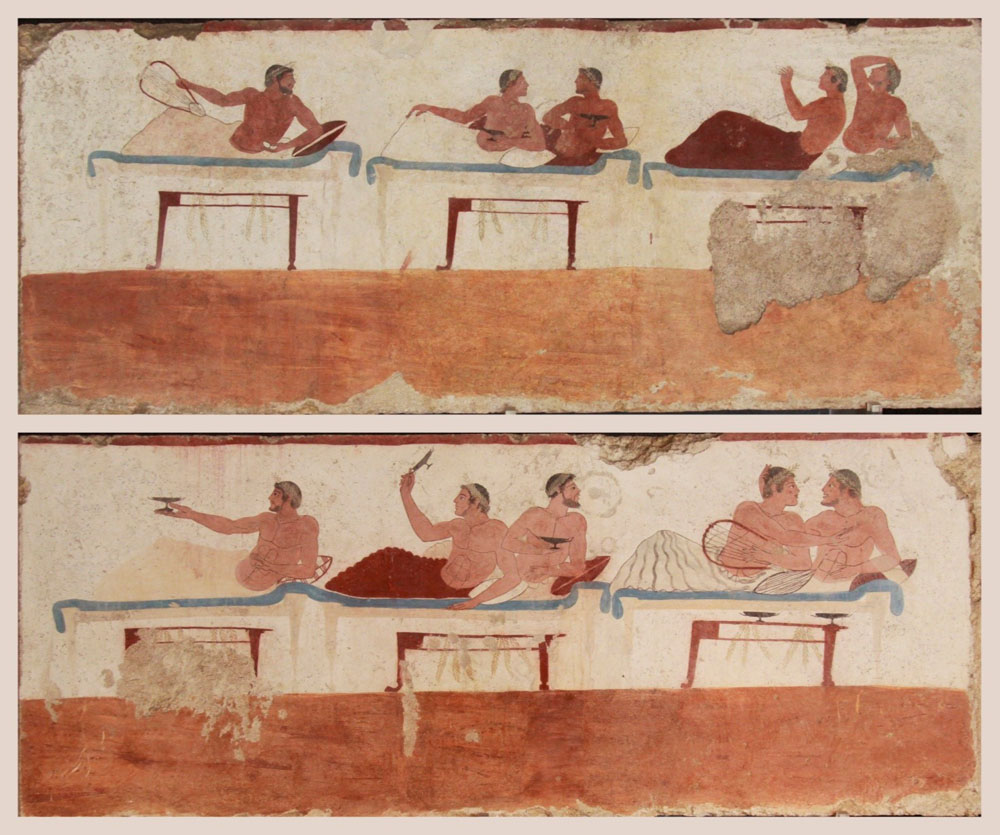
Thus, one may understand why people long ago wondered what exactly is a chair, and what is not.
Asking these questions, we have in fact begun to form the concept of a chair. Concept-formation is a logical operation but there is no reason to be frightened by this; no formulas will be needed. Rather, what we will do is try to determine what is and what is not a chair by investigating what features all chairs have in common.
That is, we will observe a large number of chairs and systematically run off their features, checking whether or not these features fit in with our common notion of chairs. So, how about seats? Well, yes, one may think, a chair has got to have a seat because otherwise we would not be able to sit on it.
Fine ― we have thus determined one essential feature of chairs: a ‘chair’ without a seat could simply not be called a chair. And now for the legs. This might be a little more difficult because we are likely to have seen chairs with different numbers of legs: some have only one, many others four but chairs with three legs can also be found.
What are we to make of this? We might come to realise that whereas the number of legs may vary it is nevertheless impossible to conceive of a chair without any legs at all. Hence, having at least one leg is crucial for something to be called a chair but the precise number would seem to be rather accidental. Continuing along similar lines we may also arrive at the decision that without a back chairs are stools rather than chairs. But this does not hold true for arms.
Now, at this point we would have determined three essential features of chairs-in-general and for our purposes we might well leave it at that.
Definitions convey the ‘essence’ of something
We are now ready for the next step: the formulation of the definition of ‘the’ chair. After all, we set out collecting chair observations prompted by the question what is a chair? or, in other words, what is it for something to be chair?
This question can be answered by lumping together all the features that we have determined to be necessary for something to be called a chair. These features are called essential, that is, when trying to determine what a chair really is we cannot do without them. But other features, such as the number of legs and the presence of arms could be dropped and will therefore not have to figure in the definition of ‘the’ chair that we aim at.
We want to come up with a definition because according to the ancient Greek thinkers definitions convey the ‘essence’ of something. In the case of our example the definition of a chair: having a seat, a back, and at least one leg, tells us what a chair really is, regardless of the historical period and style in which it was produced, the materials used for its production, whether it was designed to be an easy chair or an office chair, and so on. A definition determines the concept of chair, that is, it states what ‘the’ chair is ― the ideal or essential chair.
Incidentally, modern science does not ask questions about what things are.
Newton was not interested in what gravity really is but only in the way that gravity functions. Hence, he did not want to define gravity but to formulate its laws. Newton measured and quantified and this is what science has tried to do ever since.
The ancient Greeks on the other hand, tried to define answers to qualitative ‘what is’ questions by means of so-called thought experiments, and that is also what we have done just now. Although our experiment was a simple one it should be good enough to demonstrate that its result is quite remarkable.
From the world of senses to the world of thought
The point is that although we started out in the world of the senses our thought experiment has imperceptibly taken us to another world ― the world of thought. In the world of the eye many chairs may be perceived: concrete chairs on which it is possible to sit and of which most are in some respects different from each other. This is of course easy to see; there is no problem with this everyday observation.
But how about the chair that we have defined, the universal chair? Has one ever been seen? Unlikely. Just consider, how could one ever see the essential chair? It would have to be a chair made from thin air, having no colour because, as we have seen, the two features of material and colour may be different with every concrete chair and were therefore rejected as not essential.
The ancient Greeks also realised that the universal or essential chair is nowhere to be found in the world of the senses and that it can only be thought and thus exists as an idea. But this made essential chairs and many other ideas of a similar nature not unimportant to them, rather the opposite. Because such idea-knowledge was held in high esteem the Greek thinkers conceived of another world for the ideas. Ideal chairs along with more important ideas such as good, beauty, and justice were thought to exist in a separate world ― a world situated at another level than our day to day world of the senses. This assumption has cast a long shadow.
Generally speaking, it is impossible to over-emphasise the pervasive effect of Greek philosophy on Western thought.
“The whole fabric of Western culture is still deeply coloured by its assumptions, methods, and terminology.”[20]
This certainly holds for the dual world conception; the consequences of the rift between the world of the senses on the one hand, and the rational world of ideas on the other, are still very much with us today.
Logic of static things
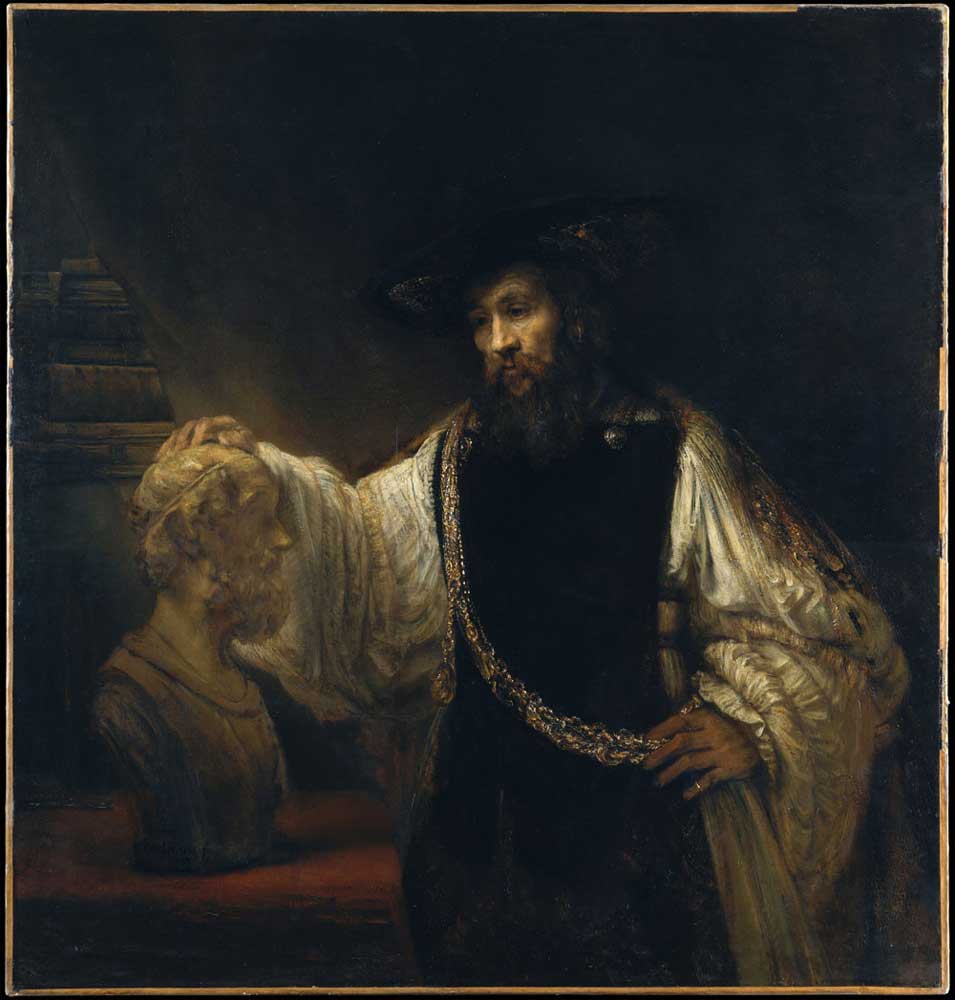
But there is more to be learned from our thought experiment. The first thing to realise is that the resulting definition is rigid and inflexible. After all, it determines what a chair ‘really’ is, shorn of everything that does not essentially belong to it so that it cannot allow of any change. The essence of a chair is immutable.
Such a framework of thinking is likely to favour fixed, unchangeable concepts and the same might be expected to apply to the worldview that it is connected with. Indeed, this is what can be observed in Western logic, whose basic pattern was formulated some 2500 years ago by the Greek philosopher Aristotle (384-322 BCE).
Quite telling in this respect is one of the principles of his logic, the ‘law of excluded middle’ according to which something is, say, black or not black but a third possibility is not given (in Latin tertium non datur). Although greatly elaborated on over the centuries and somewhat eclipsed by other kinds of logic developed since the middle of the nineteenth century, thinking in terms of well-defined, constant entities has remained very much with us.
Fuzzy logic
Chinese logic is fundamentally different because it is not a logic of static things. A recent alternative to the static logic of Aristotle is ‘fuzzy logic’, which, surely not incidentally, rejects the law of excluded middle and allows of more possibilities than just black/non-black. However, there is nothing fuzzy in the definition of the essential chair; every chair either confirms to it, or it does not and is therefore not to be called a chair ― a third possibility is not given.
Another consequence of the importance accorded in ancient Greece to definition and essence is that it brings with it a way of thinking in terms of individual things, separate from and clearly distinguishable from other things. This is of course related to the rigidity of definitions but it is important enough to merit mentioning by itself. Again, Greek logic provides an example.
Up until now, we have dealt with the formation of concepts. But another and related logical operation is the formation of judgments, for instance, ‘this chair is comfortable’. This simple observation already constitutes a judgment: the chair that I am sitting in is declared or judged to be comfortable.
Aristotle would have said that a predicate (comfortable) is assigned to a subject (chair). In other words, individual things may be assigned a number of features, such as comfortable, brown, and so on. This means that these individual things (subjects) are the focus points of judgments. Actually, things are said to be ‘individuated’ by assigning them a number of features. Calling a chair comfortable, brown, etc., it is distinguished from other chairs. Incidentally, whereas definitions distinguish between different kinds of things, that is, between chairs and stools, judgments distinguish between individual things, that is, between this comfortable chair and another chair that may be not quite as comfortable.
Often however, such distinctions are implicit. In order to say ‘this chair is comfortable’ I do not have to explicitly compare it one by one with all the other chairs in my room. My judgment implies that there are other chairs that I find less comfortable than this one. I could of course say ‘it is possible to sit in this chair’ but since this is by definition true of every chair it would not make sense because it would not distinguish a particular chair from another one, whereas judging it to be comfortable, thus distinguishing it from other, less comfortable chairs, does.
- Ames, R.T. (1994). The focus-field self in classical Confucianism. In R. Ames, W. Dissanayake, and T.P. Kasulis (Eds.). Self as person in Asian theory and practice (pp. 187-212). Albany: SUNY Press.
- Chan, Wing-tsit. (1963). A sourcebook in Chinese philosophy. Princeton: Princeton U.P.
- Cheng, Chung-ying. (1989). Chinese metaphysics as non-metaphy- sics: Confucian and Daoist insights into the nature of reality. In R. E. Allinson (Ed.). Understanding the Chinese mind (pp. 167-208). Oxford: Oxford U.P.
- Cheng, Chung-ying. (2003a). Philosophy of change. In A.S. Cua (Ed.). Encyclopedia of Chinese philosophy (pp. 517-524). New York:
- Cheng, Chung-ying (2003b). Ti: body or embodiment. In A.S. Cua (Ed.). Encyclopedia of Chinese philosophy (pp. 717-720). New York:
- Fung, Yu-lan. (1960). A short history of Chinese philosophy. New York: Macmillan
- Fung, Yu-lan. (Transi). (1931/1995). A Taoist classic: Chuang-tzu. A new selected translation with an exposition of the philosophy of Kuo Hsiang. Beijing: Foreign Languages Press.
- Jullien, F. (2000). Detour and access: Strategies of meaning in China and Greece (Sophie Hawkes, transl.). New York: Zone Books.
- Kuriyama, S. (1999)- The expressiveness of the body and the divergence of Greek and Chinese medicine. New York: Zone Books.
- LinYu-tang. (1967). The Chinese theory of art. London: Heinemann
- Liu Dan Zhai. (1996). Paintings and calligraphy. Shanghai: Shanghai Shu-hua Chubanshe.
- Lloyd, G.E.R. (2002). The ambitions of curiosity: Understanding the world in ancient Greece and China. Cambridge: Cambridge U.P.
- Lloyd, G.E.R. & Sivin, N. (2002). The way and the word: Science and medicine in early China and Greece. New Haven: Yale U.P.
- Luce, J.V. (1992). An introduction to Greek philosophy. London: Thames and Hudson.
- Needham, J. (1956). Science and civilisation in China, Vol. 2, History of scientific thought. Cambridge: Cambridge U.P.
- Ronan, C.A. (1978). The shorter science and civilisation in China ― An abridgement of Joseph Needham’s original text, Vol. 1. Cambridge: Cambridge U.P.
- Soothill, W.E. (Transi). (1910/1995). Confucius, The Analects. New York: Dover Publ.
- Watts, A. (1954). The wisdom of uncertainty. London: Rider.
- Yip, W-L. (1976). Chinese poetry. Berkeley: University of California Press.
- Yu, Jiyuan. (1999). The language of being: Between Aristotle and Chinese philosophy. International Philosophical Quarterly, 39, 439-454.
Notes
[1] Kuriyama, 1999, p. 62
[2] Source: There are no contemporaneous portraits of Du Fu; this is a later artist’s impression
[3] Jullien, 2000, pp. 368-369
[4] Souce: Tang dynasty hand-written copy of the Analects of Confucius with Glossary by Zheng Xuan. The earliest copy known dating from 710 CE.
[5] Jullien, 2000, pp. 81-83
[6] Source: The state of Lu, a remnant of the city wall of Lu’s capital city, surviving on the outskirts of Qufu
[7] Jullien, 2000, p. 152
[8] Source: Guo Xi ― Early Spring, signed and dated 1072, Hanging scroll, ink and color on silk.
[9] Jullien, 2000, p. 190
[10] Yip, 1976, p. 9
[11] Jullien, 2000, p. 191
[12] Lin Yu-tang, 1967, p. 193
[13] Wang Yuanhua, Postscript in Liu Dan Zhai, 1996
[14] Lin Yu-tang, 1967, pp. 34-36
[15] Jullien, 2000, p. 192
[16] Jullien, 2000, p. 161
[17] Jullien, 2000, p. 163
[18] Source: Homer (c. 800– c. 701 BCE) was the presumed author of the Iliad and the Odyssey, two epic poems.
[19] Kuriyama, 1999, pp. 120-121
[20] Luce, 1992, p. 9
[21] Source: Rembrandt ― Aristotle with a Bust of Homer





